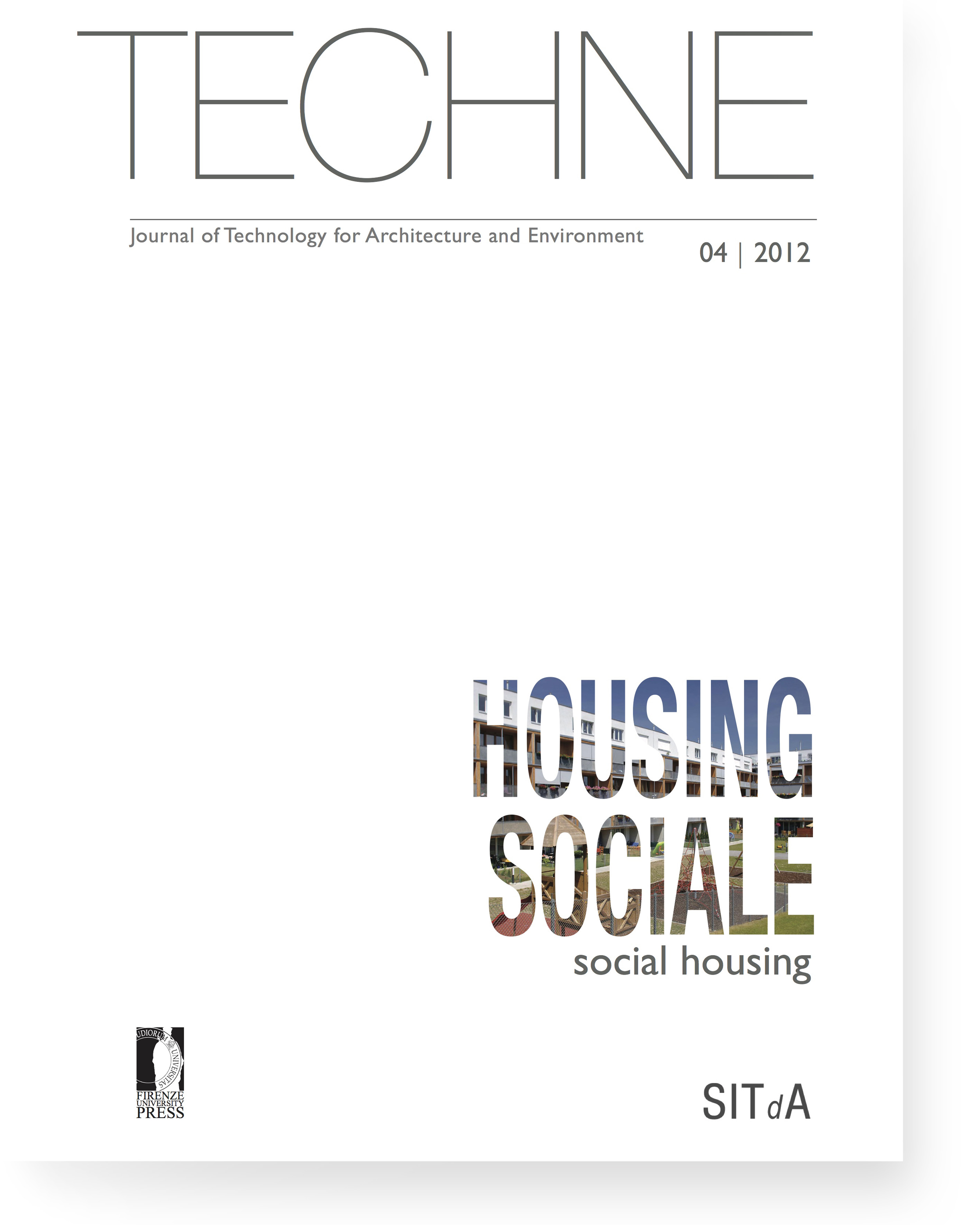Research and Experimentation
Published 2012-10-28
Keywords
- Environmental sustainability,
- Bioclimatic Architecture,
- Energy efficiency,
- Ecological efficiency
How to Cite
Herzog, T., Battisti, A., & Tucci, F. (2012). Experimentation on Social housing between energy environmental efficiency and low cost. TECHNE - Journal of Technology for Architecture and Environment, (4), 343–354. https://doi.org/10.13128/Techne-11535
Abstract
Two main theoretical points are underlying the experimentations carried out in the attempt to improve and foster the technological evolution of Social housing; on one hand the search for energy and bioclimatic efficiency, on the other hand the respect of economical feasibility matters in relation to the low construction cost required by such works. The chance to experiment such an approach, in the attempt to reach further than the mere respect of norm requirements, is represented by the experimentations in the Roman area discussed in the present paper: one has already been carried out and is currently undergoing supervision; the other one is currently being developed.Downloads
Download data is not yet available.






